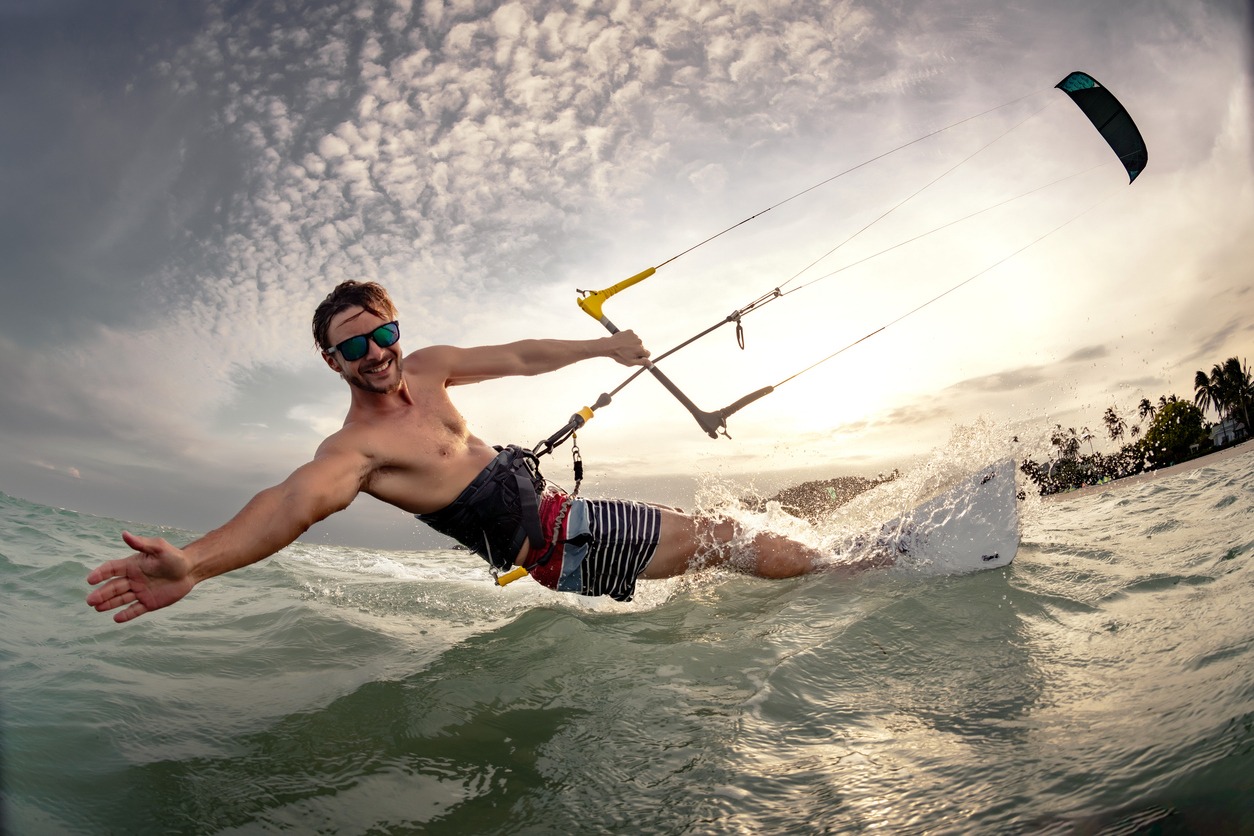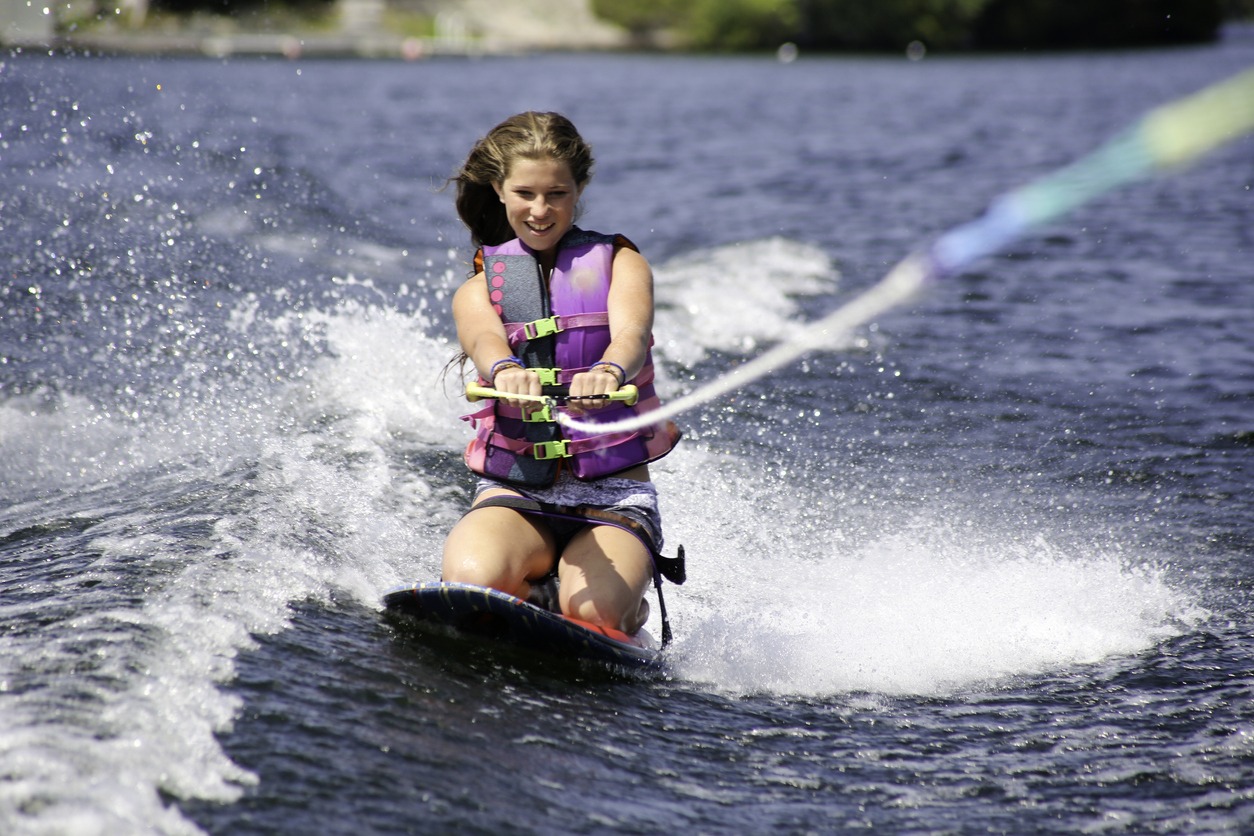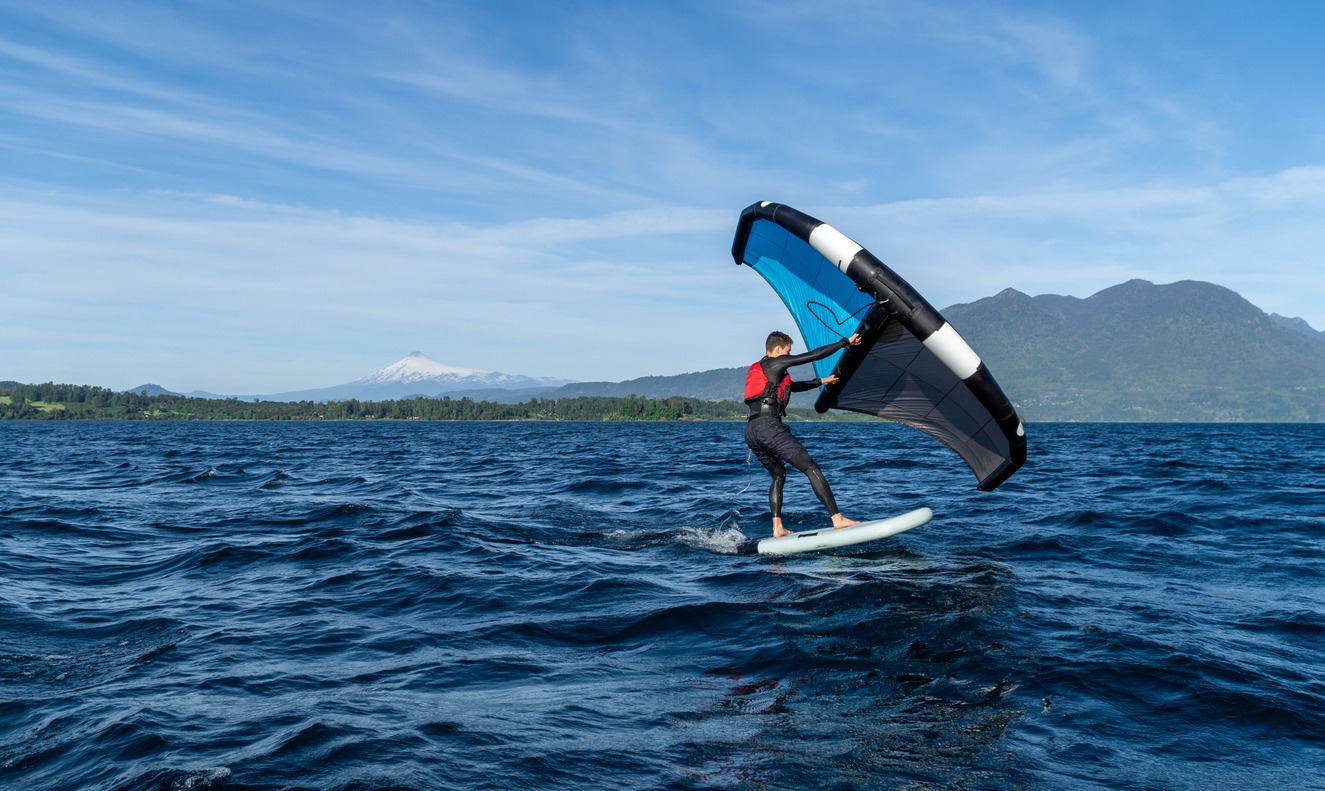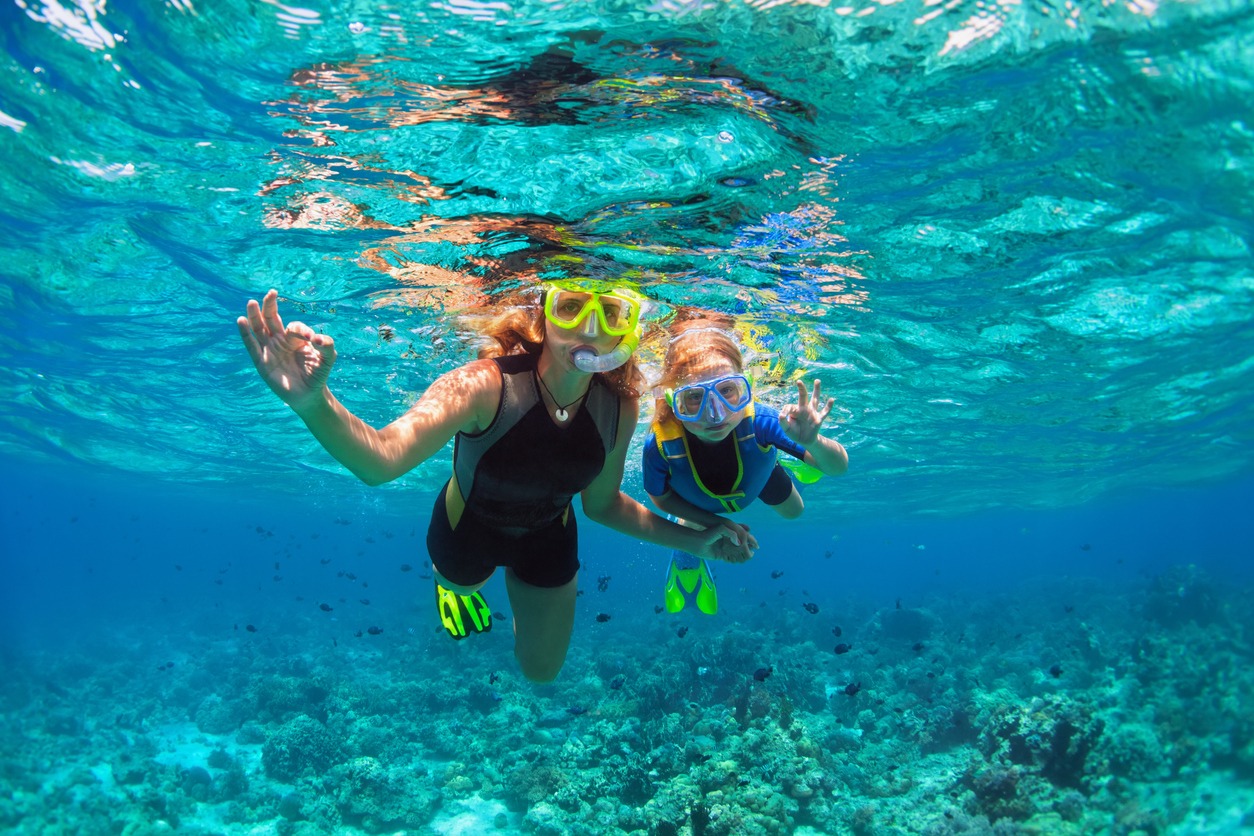A Beginner’s Guide to Flowriding: What You Need to Know
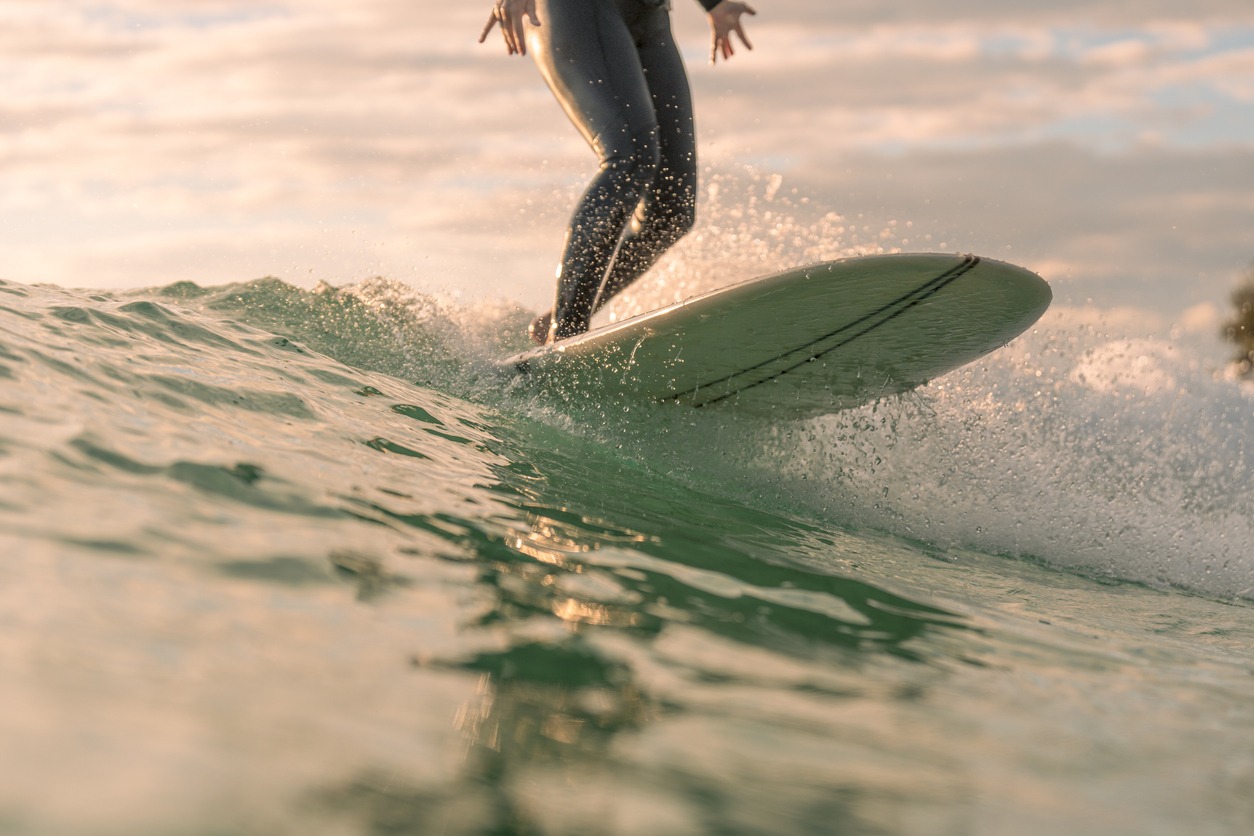
Flowriding combines surfing, skateboarding, and wakeboarding on a specially designed surface with a continuous sheet of water. You'll need to immerse yourself in the proper stance: low, athletic, with bent knees and weight evenly distributed. Keep your eyes forward and focus on maintaining balance as you ride the artificial wave. Safety is pivotal, so wear secure swimwear and stretch before your session. Start with basic balancing techniques before progressing to turns and maneuvers. Avoid common mistakes like standing up too quickly or making sudden jerky movements. As you gain confidence, you'll be able to execute smooth, controlled turns and enjoy this thrilling water sport. Plunge deeper to open up the full potential of flowriding.
Understanding Flowriding Basics
Imagine riding a wave that never ends. That's the essence of flowriding, a thrilling hybrid water sport that combines surfing, skateboarding, and wakeboarding. At venues like Wave House, you'll find a Flowrider - a specially designed surface with a continuous sheet of water propelled by high-volume pumps.
Unlike traditional ocean surfing, flowriding offers a controlled environment that's perfect for beginners who want to learn to surf without the unpredictability of the sea. You'll ride a board on this artificial wave, performing various maneuvers like turning, dropping, and climbing. As you gain confidence, you can even attempt tricks.
To get started on the flow rider, you'll need to meet minimum height requirements: 42 inches for bodyboarding and 52 inches for flowboarding. Don't worry if you're new to the sport - many facilities offer private lessons and group rentals to help you improve your technique and build confidence.
Flowriding provides a unique opportunity to experience the thrill of surfing in a safer, more accessible setting. It's an excellent way to develop your balance, coordination, and water sports skills while having fun on an endless wave.
Essential Safety Precautions
When it comes to flowriding, safety should be your top priority. Before you even step onto the crest of the wave, make sure you're wearing a secure swimsuit and that all loose items are fastened. This will prevent any wardrobe malfunctions or lost belongings during your ride. Flowrider devices can offer simulation of breaking waves that attract surfers and bodyboarders, so proper safety precautions are essential.
As you ride, adopt a low, athletic stance with your knees bent and your center of gravity close to the board. This position will help you maintain balance and control. Always keep your eyes forward and focus on keeping the board straight to avoid wiping out.
If you feel unstable, don't try to power through it. Instead, sit down safely to avoid a potential injury. Remember, it's better to end your ride early than risk hurting yourself.
To prevent muscle soreness and fatigue, stretch thoroughly before, during, and after your flowriding session. Pay special attention to your back and leg muscles, as they'll be working hard to keep you upright.
Lastly, always follow the instructions given by Flowrider attendants and staff. They're there to guarantee your safety and help you have an enjoyable experience.
Proper Stance and Positioning
The foundation of successful flowriding lies in commanding the proper stance and positioning. To command the flowrider, you'll need to adopt a low, athletic stance with your knees bent and center of gravity close to the board. This will help you maintain balance as you navigate the artificial wave.
Start by sitting on the board to get a feel for the water flow and board movement. As you progress to standing, keep your weight evenly distributed between both feet. Avoid the common mistake of putting too much weight on the back foot or leaning too far forward. Position your toes pointing forward and square your shoulders to the wave for optimal control. Situated along the sun-kissed coast of California, Malibu is known as the world's inaugural dedicated World Surfing Reserve and offers a quintessential West Coast surfing adventure.
Finding the right position is essential. Keep your front foot angled slightly forward and your back foot perpendicular to the board. Use your arms to help maintain balance and counter any shifts in your body while riding. Remember, flowriding is all about adapting to the constant movement of water beneath you. By commanding the proper stance and positioning, you'll be well on your way to conquering the flowrider and enjoying this thrilling water sport.
Balancing Techniques for Beginners
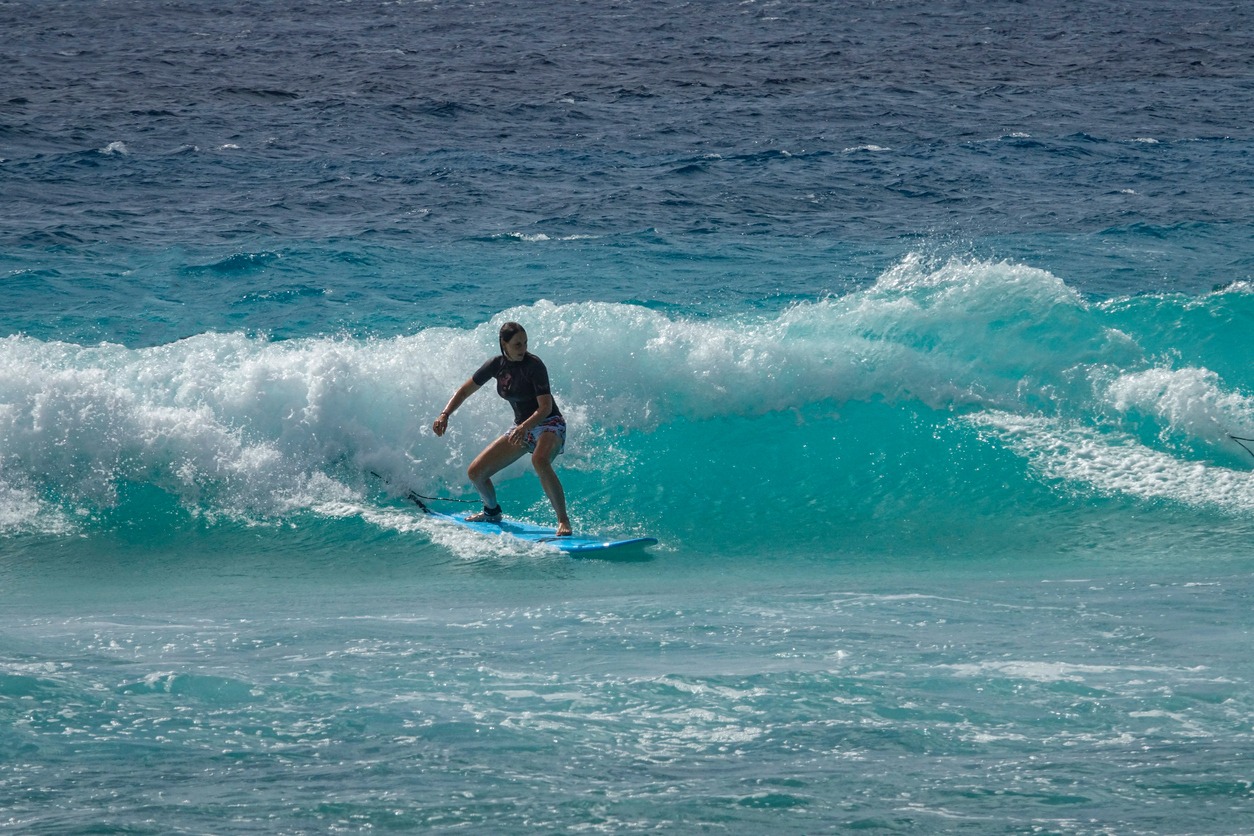
Once you've learned the proper stance, it's time to focus on balancing techniques that'll keep you upright on the flowrider. Your back foot plays an essential role in maintaining balance, so keep it firmly planted on the board. As you ride, use subtle movements of your back foot to control the board's direction and speed.
To maintain balance, keep your eyes focused on a fixed point ahead of you, not on your feet or the water rushing beneath. This will help you stay centered and react more quickly to changes in the flow. Bend your knees slightly and keep your arms relaxed at your sides, using them to make small adjustments as needed.
Practice shifting your weight between your front and back foot to find the sweet spot that gives you the most control. As you gain confidence, try leaning forward slightly to increase speed or backward to slow down. Remember to keep your core engaged, as this will help you maintain stability and react more quickly to any sudden changes in the flow. With practice, these balancing techniques will become second nature, allowing you to enjoy the thrill of flowriding with greater ease and control.
Mastering Turns and Maneuvers
Now that you've got your balance down, it's time to tackle turns and maneuvers on the flowrider. Mastering these techniques will elevate your riding experience and allow you to navigate the artificial wave with confidence.
To initiate a turn, lean slightly in the direction you want to go. This subtle weight shift will guide your board's movement. Use gradual body movements to control your trajectory, avoiding sudden jerks that could throw you off balance. Experiment with different turning techniques, such as transitioning from heel-to-toe or toe-to-heel, to find what feels most natural for you.
Maintaining an athletic, balanced stance is essential for executing smooth, controlled turns. Keep your knees slightly bent and your core engaged to react quickly to changes in the water flow. As you progress, you'll need to adjust your stance and weight distribution to handle varying conditions on the wave.
Common Mistakes to Avoid
While learning to flowride, you'll likely encounter some common pitfalls. One of the most frequent mistakes is trying to stand up too quickly before getting a feel for the water flow. This fervent eagerness often leads to swift wipeouts, so take your time and get comfortable with the surface before attempting to rise.
Another pivotal error to avoid is leaning too far forward or back. Maintaining proper balance is essential, and any extreme positioning will increase your chances of falling. Similarly, sudden jerky movements can destabilize your board and make it challenging to stay in control. Keep your movements smooth and deliberate to maintain stability.
Pay attention to your foot positioning as well. Incorrect placement, such as pointing your toes inward, can compromise your balance and hinder your ability to turn effectively. Ensure your feet are properly aligned on the board for optimal control.
Lastly, don't overexert yourself early on. Flowriding engages your core muscles intensively, and tiring them out too quickly can impede your progress and enjoyment. Pace yourself, take breaks when needed, and gradually build up your endurance to make the most of your flowriding experience.
Progressing Your Skills
After becoming proficient in the basics, you'll be ready to take your flowriding skills to the next level. As you progress, focus on honing subtle weight shifts and body movements to control your board with precision. Experiment with different turning techniques, like heel-to-toe or toe-to-heel, to enhance your maneuverability.
Maintain an athletic stance with bent knees and a low center of gravity to facilitate smooth, controlled movements. As you gain confidence, challenge yourself by riding up the wave, adjusting your stance and weight distribution to handle changes in water flow. Over time, you'll develop the ability to surf the artificial wave with greater ease and style.
Don't be afraid to push your limits, but always prioritize safety. Learn proper falling techniques, such as tucking your chin and falling to the side, to avoid injury. Practice using the water flow to quickly regain your standing position after a fall. As you progress, you may want to try advanced moves like spinning or even shifting from boogie boarding to standing. Remember, consistent practice is key to improving your flowriding skills.
Equipment and Gear Guide
The right equipment is essential for a safe and satisfying flowriding experience. Whether you're taking private lessons or it's your first time, you'll need to dress appropriately. Secure swimsuits are a must for all riders, as loose clothing can pose safety risks. You'll also need closed-toe shoes or water shoes to protect your feet and maintain grip on the board.
When you arrive for your session, instructors will provide you with a bodyboard or flowboard. If you're an experienced rider with your own flowboard, you can bring it along, but make sure it meets the venue's size and weight requirements. For beginners or those attempting advanced tricks, wearing a helmet is highly recommended.
Remember to remove any jewelry before riding, as loose items can be hazardous. If you're unsure about what to wear or bring, don't hesitate to ask the staff for guidance. They're there to support you in having a safe and satisfying experience. By following these equipment guidelines, you'll be well-prepared to hit the waves and make the most of your flowriding journey.
Flowriding Etiquette
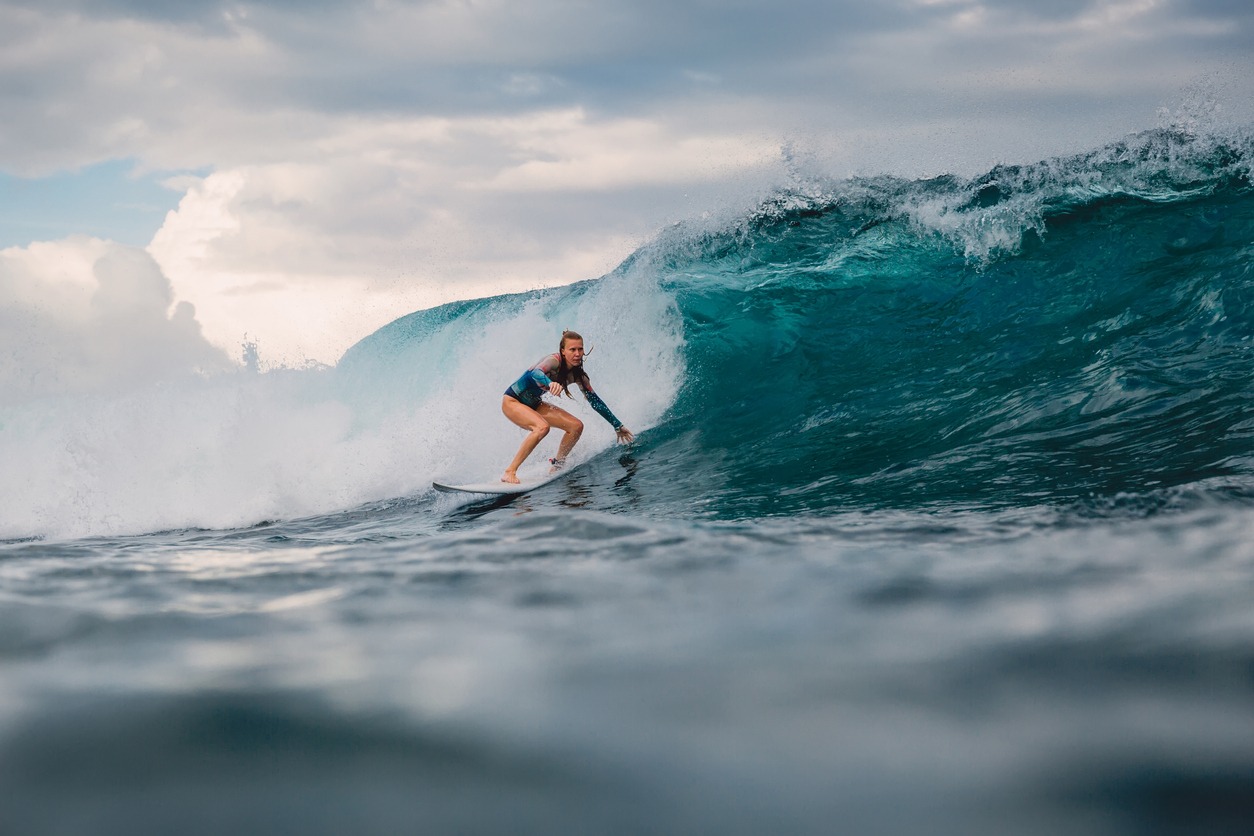
Now that you're properly equipped, it's time to examine the social aspects of flowriding. Understanding and adhering to proper etiquette is paramount for a safe and enjoyable experience for everyone on the Flowrider.
First and foremost, respect the flow and riding order by waiting your turn patiently. This guarantees a fair and organized system for all riders. When it's your turn, be mindful of others and keep a safe distance from fellow flowriders to avoid collisions or interference.
Always follow the instructions of the Flowrider attendants and staff. They're there to ensure your safety and the smooth operation of the attraction. Their guidance is indispensable, especially for beginners.
Maintaining cleanliness is another important aspect of flowriding etiquette. Properly dispose of any trash or belongings to keep the area tidy and safe for everyone. This simple act shows respect for the facility and other riders.
Lastly, be courteous and offer assistance to less experienced riders when appropriate. Remember, everyone was a beginner once, and your kindness can make a significant difference in someone else's flowriding experience. By following these etiquette guidelines, you'll contribute to a positive and welcoming environment for all flowriders.
Finding Flowrider Locations
Desirous to commence your flowriding excursion? Finding Flowrider locations is easier than you might think. You'll explore these thrilling surf simulators in various settings, from cruise ships to theme parks and tropical resorts.
Next time you're planning a vacation with family and friends, consider a cruise line that features Flowrider attractions. Royal Caribbean, Carnival, and Norwegian Cruise Line all offer this exciting amenity on select ships. If you prefer to stay on land, check out major theme park chains like Six Flags and Cedar Fair, which have incorporated Flowrider experiences at some of their locations.
For a more relaxed environment, tropical resorts in Hawaii, the Bahamas, and the Caribbean often boast Flowrider surf simulators on-site. These destinations provide the perfect backdrop for honing your skills while enjoying a beach getaway.
Don't worry if you can't go far from home. Many cities now have dedicated Flowrider facilities as standalone attractions. These venues cater to the growing popularity of the sport and offer a convenient way to practice regularly. Once you've acquired the basics, you'll be keen to go back and show off your newfound skills at any Flowrider location you encounter.

